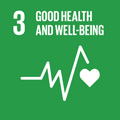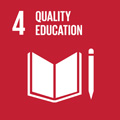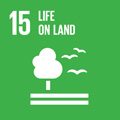- Docente: Silvia Canaider
- Credits: 6
- SSD: BIO/13
- Language: Italian
- Teaching Mode: Traditional lectures
- Campus: Bologna
- Corso: First cycle degree programme (L) in Exercise and Sport Sciences (cod. 8512)
-
from Sep 25, 2024 to Dec 18, 2024
Learning outcomes
At the end of the course, the student should: know the concept of cell theory; the basic structure of the eukaryotic and prokaryotic cells as well as the functions of single structures or complexes of structures; know the main regulation mechanisms of eukaryotic cell activities (gene expression, protein synthesis, motility, communication, differentiation, cellular and organismic reproduction strategies, with particular reference to human reproduction, cell cycle and apoptosis); be able to clearly communicate their knowledge and link the argument of the whole program. The course aims to help the students to comprehend the issues needed to understand the scientific subjects that they will study along the course and to acquire the ability to critically be involved in bio-medical problems.
Course contents
THE STUDY OF LIFE
Concept of living being and properties; the cellular doctrine; the scientific method; outlines of evolution.
Biological role of elements, molecules and macromolecules; structure and properties of water; proteins, nucleic acids, ATP.
THE EUKARYOTIC CELL
Shape, size and structure of the eukaryotic cell; the plasma membrane: the cytoplasm; intracellular membrane system: rough and smooth endoplasmic reticulum, Golgi apparatus, lysosome, peroxisome, exosome; the nucleus: DNA, chromatine and chromosomes; the mitochondria; the ribosomes; the cytoskeleton: actin filaments and muscle cells , intermediate filaments and microtubules; cellular junctions; cell-cell communication.
THE GENETIC INFORMATION
DNA structure; the human genome; the eukaryotic gene; the DNA replication; the gene expression: transcription, genetic code and traslation.
Mendelian inheritance; complete and incomplete dominance; codominance; multiple alleles; Sex-Determining Genes; mutations.
EPIGENETICS
THE REPRODUCTION
The cell reproduction: cell cycle, necrosis, apoptosys and mitosis.
The organisms reproduction: meiosis, spermatogenesis, ovogenesis, ovarian cycle, uterine cycle, fertilization.
HABITAT
Physical, chemical and biotic factors that define character; relationship between genes and habitat.
Readings/Bibliography
Readings and Bibliography will be presented during lessons.
Teaching methods
Lessons, readings, discussion, practical activities in small groups.
Assessment methods
Written examination to evaluate the knowledge of the biological issues throughout multiple choice questions, open questions and exercises.
Oral examination to evaluate the ability to present an argument and to link different arguments among biology and genetics.
Teaching tools
Books, papers, slides, video.
Office hours
See the website of Silvia Canaider
SDGs



This teaching activity contributes to the achievement of the Sustainable Development Goals of the UN 2030 Agenda.
